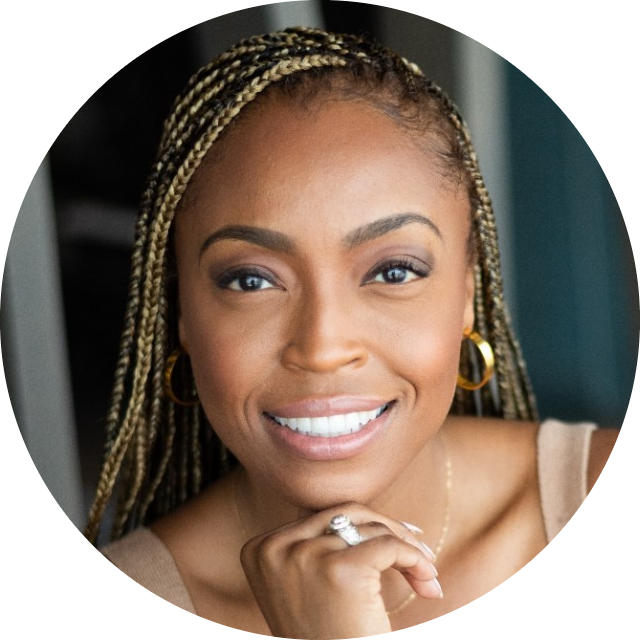Why bias disruptors are important in the workplace

“Purple flag.”
That’s the phrase that Trier Bryant and Kim Scott decided to use to identify bias immediately during a meeting where they work at Just Work, a training and coaching company. Other companies that they’ve taught this practice to throw up a peace sign, say “yo” or “ouch” or “bias alert,” or even meow to bring attention to what they perceive as biased statements as soon as they happen.
It might seem like a drastic measure to call someone out for what they said exactly after it happened instead of one-on-one, but Bryant and Scott say that being an upstander to bias is key to removing it from the workplace. As more and more companies continue to push to be more diverse and inclusive in their recruiting processes, companies need to take the next step and ensure everyone is comfortable in their day-to-day at a job.
“We have to acknowledge we are bringing together people from different backgrounds, different experiences, different cultural norms, which means there’s going to be an increased opportunity for bias to happen,” said Bryant. “It’s inevitable, but it doesn’t mean we can’t get better and learn from it.”
Unconscious bias is a thought pattern, said Bryant and Scott who added that it will only change with course correction. And it creates a teaching moment for everyone else in the workplace.
“Bias is a pattern, and we can change them in collaboration with others,” said Scott, author of workplace books Just Work and Radical Candor. “If you don’t say something in the moment, then you’re reinforcing the bias. That’s why it’s so important to do this.”
“It’s about building that muscle,” said Bryant.
Other workplaces might have an hour long unconscious bias training as part of an onboarding to a company, but the pair argues that this has a larger impact.
Scott said she realized the importance of this kind of work because there was a time when she didn’t intervene during a meeting with bias.
“I had been most deeply in denial about the times that I had inadvertently harmed people who I worked with,” said Scott. “I had been biased myself. As a leader, I hadn’t created the kind of environment where everyone could just work.”
She says there are three parts to disrupting bias. The first is having a shared vocabulary, which includes the aforementioned terms like purple flag, throwing up a peace sign, and so on. That phrase or signal should be chosen based on what works best for everyone in that group.
“It’s hard to know at the moment what to say to disrupt bias to point it out,” said Scott. “You want to give someone a catchphrase to fall back on and a phrase that the whole team is comfortable using.”
The second part is teaching people how to react well when it comes to having their own bias pointed out, which can be inevitably difficult in some situations, especially the first time that it happens.
“When I realize I said something that’s biased, I feel deeply ashamed,” said Scott. “We rarely respond well when we feel shame. You want to teach people how to move through that shame.”
A big part of that is having people understand that it is meant to be a moment of learning for everyone, and not a tool used to call people out and make them feel terrible. In fact, Bryant has changed her language from calling people “out” to calling people “in.”
“It is inviting and calling people in on their bias,” she said.
When a bias disruptor is signaled, the person affected might say thank you for catching that, or they might say I don’t understand, can you help me see why it’s biased.
The third and final thing is that a team needs to have a shared commitment over practicing this work. It won’t have as far reaching of an impact if everyone isn’t on board to identifying bias and making the changes. In fact, Bryant and Scott encourage leaders to ask people to reflect at the end of the meeting if there were no flags thrown to see if there was truly no bias or if it just wasn’t caught. Scott says this could be a 20 second reflection.
Some people might be wondering if teams really have the time to stop a meeting to have a discussion about bias every time.
Scott argues it actually saves time at the end of the day and makes the team feel more productive and fair.
“What really takes a lot of time is if there is an elephant in the room,” said Scott. “If someone is doing or saying something that’s biased and that is really obnoxious to some of their colleagues and they don’t get told, let’s think about what happens. They’re going to do it again, and the people who are harmed by it are going to be more and more angry as that person repeats the mistake and the observers are going to be more and more uncomfortable.”
That could lead to discussions outside of the meeting and become a larger distraction than it needs to be.
Bryant puts it simply: bias can lead to “not getting the best from your people if that’s what they’re focused on and distracted by.”
At the end of the day, they say it’s about ensuring your company has created a culture where everyone feels comfortable both with using certain language to identify bias and to potentially be identified themselves as being biased. A leader in the company can help ensure that.
“Leaders can lead by example by actually flagging themselves first,” said Bryant. “I throw up purple flags on myself all the time, like ‘ugh, I just said that?’ Holding myself accountable gives that space, like if my leader is flagging that and holding themselves accountable, then I can too.”


